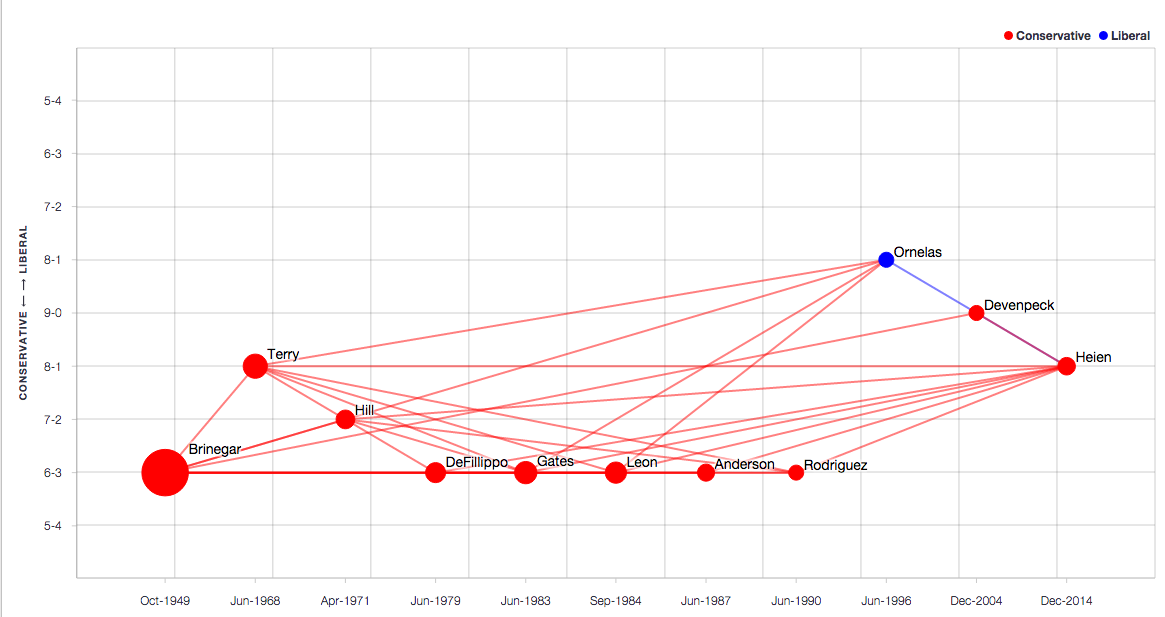Last week, we launched our new online SCOTUS mapping tool and noted that we had also created collection of citation networks for every case decided in the Court’s 2014 Term. Today’s post introduce this network collection by examining just one of its networks.
The collection renders networks for each of the 2014 Term cases coded by the Supreme Court Database (Spaeth). Last term, there were 71 such cases. The first was Heien v. North Carolina, in which the Court held that a police officer’s reasonable mistake of law gives rise to reasonable suspicion that justifies a traffic stop under the Fourth Amendment.
The map above shows both the citation network linking Heien back to a 1949 case called Brinegar v. United States and the Spaeth vote count and decision direction for each cases in the network.
Like every case in the collection, the choice of anchors (in this case Heien and Brinegar) is justified in the “Description” field of the network. Quite obviously, Heien serves as the “latest case” anchor because it is the case we are examining. Brinegar was chosen as the “early case” anchor this network based on textual analysis of Heien. Specifically, Brinegar is cited this way in Heien:
To be reasonable is not to be perfect, and so the Fourth Amendment allows for some mistakes on the part of government officials, giving them “fair leeway for enforcing the law in the community’s protection.” Brinegar v. United States, 338 U. S. 160, 176 (1949).
Note that the map above shows the two-degree network. This means that all the cases Heien cites that in turn cite Brinegar are shown. Since all the cases shown in the map above were cited by Heien and themselves cited Brinegar, one would expect the network as a whole to be largely concerned with mistake-of-law doctrine.
Although the two-degree network is most likely to contain relevant cases, the tool also generates a three-degree network. This would include cases citing Brinegar that are cited that Heien cites. The three-degree network is visualized this way:
While the two-degree network has only 11 cases (purple + red), the three-degree network has 61 cases (purple + red + green). This three-degree network will likely mostly include other Fourth Amendment cases; far fewer of them will be mistake-of-law cases.
Hopefully, this quick treatment gives interested folks an idea of what is contained in the 2014 Term collection. To review: Every 2014 Term case is linked to an earlier case to create a network. The choice of early anchor is specifically justified by analysis of the text of the 2014 Term case. Two- and three-degree networks are created and can be viewed by reference to the Spaeth data. Of course, links to the complete text of every opinion are also provided.
Next time: Quantitative analysis of SCOTUS citation networks.


